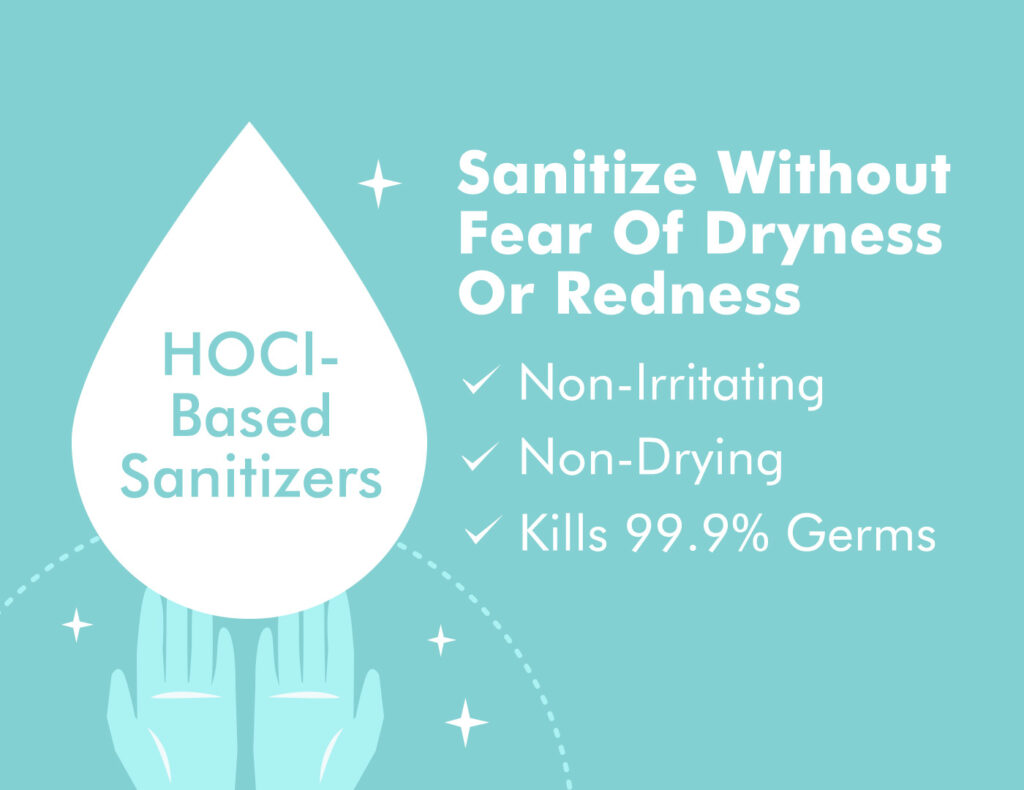Call Us: (512) 432-5138

Hypochlorous acid (HOCl)
Hypochlorous acid (HOCl) is a potent oxidant that has been used effectively against a variety of bacteria, fungi, viruses, and pathogens. This disinfectant is professional strength and eliminates 99.9% of germs without harmful chemicals or fumes. HOCl is a popular disinfectant solution used in healthcare, water treatment, food safety, and general sanitation.
Even with its effectiveness at killing viral and bacterial pathogens, hypochlorous acid is 100% safe for use by people in their homes as well as in commercial applications without the need for personal protective equipment (PPE). Hypochlorous Acid is EPA-certified organic and a non-toxic disinfecting agent. CleanSmart HOCl is completely harmless even in the event of an accidental ingestion or contact with your eyes making it a perfect option for use around children and animals.
CleanSmart HOCl is remarkably effective at very low concentrations. It takes only a very small amount of HOCl to successfully kill viruses, bacteria, and destroy proteins like inanimate pet allergens in comparison to higher pH bleach-based products. Despite this outstanding ability, it is also gentle on surfaces, and leaves behind minimal residue. CleanSmart HOCl is EPA approved as a food contact sanitizer that does not require a rinse step when used on surfaces that come into contact with food.

Why is HOCl more efficient at killing pathogens?
Hypochlorous Acid (HOCl) vs. Sodium Hypochlorite (Chlorine Bleach)
- The Hypochlorite ion carries a negative electrical charge, while hypochlorous acid carries no electrical charge.
- The hypochlorous acid reacts swiftly, able to oxidize the bacteria within seconds, while the hypochlorite ion can take up to half an hour to get this result.
- Germ surfaces carry a negative electrical charge which results in a repulsion of the negatively charged hypochlorite ion to the area of the germ surfaces, making hypochlorite ion less effective at killing germs.
- The hypochlorous acid’s lack of electrical charge allows it to penetrate the protective barriers surrounding germs more efficiently.


